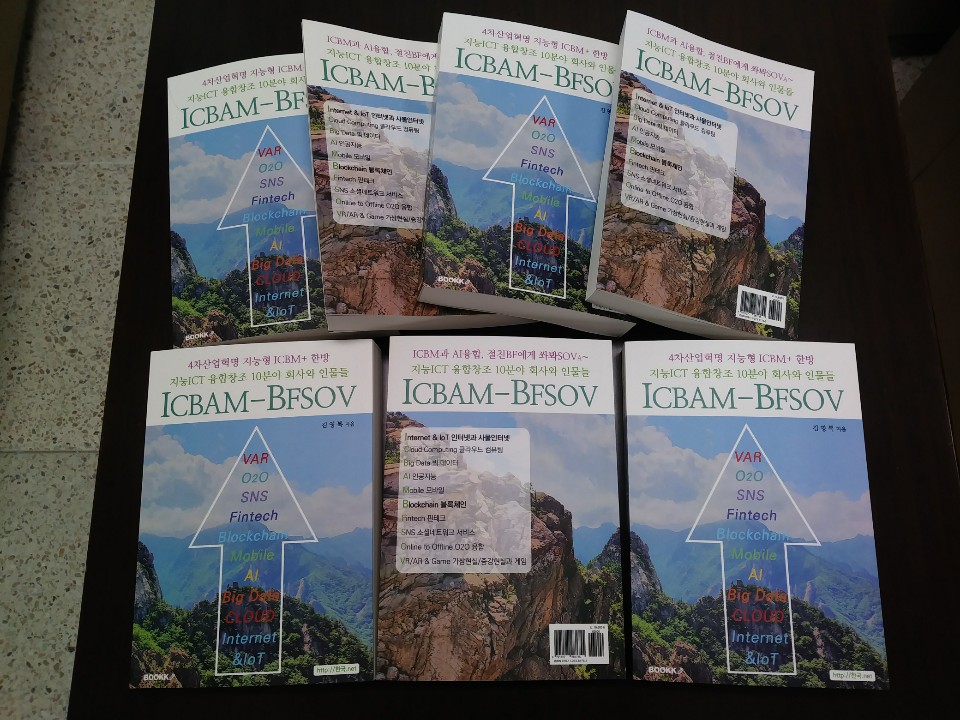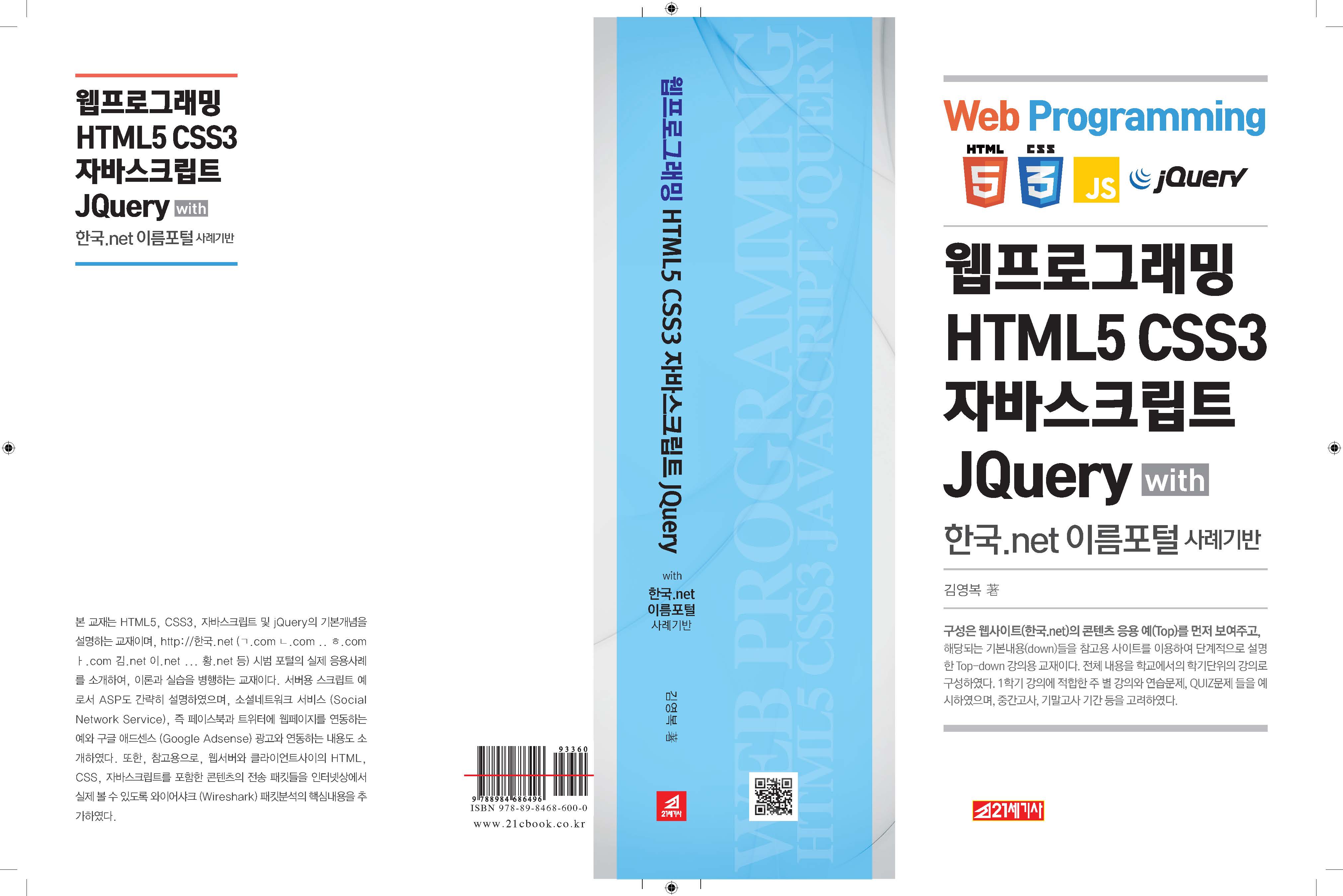원본은 춘추 시대 오나라왕 합려를 섬기던
손무(孫武, 기원전 545년경~기원전 470년경)가 쓴 것으로
알려져 있다. 현재까지 전해지는 손자병법은
조조가 원본을 요약하고 해석을 붙인
위무주손자(魏武註孫子) 13편이다.
[원본]
현존하는 판본인 손자병법 즉 위무주손자는
13편으로 구성되어 있지만, 중국 은작산에서 죽간손자병법의
발굴로 죽간손자병법이 전통적으로 전래오는 다른 판본과
다르게 손무가 생존시에 저술한 손자병법 원본과 가깝게
여겨진 판본으로 생각되었다. 또 「죽간손자병법」과
다른 전래되어 전해진 판본에는 용간편과 화공편이
순서가 틀리게 구성되었다. 한서 예문지(漢書藝文志)에는
82편과 그림 9권등 내용이 더 있다고 하나,
전해져 내려오는 것은 없다.
손무의 손자로서 전국시대 제(齊)나라의 전략가
손빈(孫臏)이 저자라는 설도 있었으나 1972년 4월,
은작산 한나라 무덤에서 엄청난 양의 죽간이 발견되어
《손자병법》과 《손빈병법》이 다르다는 것을 밝혔다.
이후의 연구결과, 손무의 기록이 손자병법의 원본이고,
손빈의 것은 제나라의 손빈 병법이라는 것이 현재까지
주류 학계의 추정이다. 한편 손무(孫武)가 지었으나
그의 후손인 손빈(孫殯)에 이르러 완성했다는 설도 있다.
[구성]
손자병법은 다음과 같이 총 13편으로 구성되어 있다.
1.시계편(始計篇) On assessment : 전쟁에 앞서 승산을
파악하고 기본 계획을 세우는 것의 중요성, 전쟁의 승패를
결정짓는 전략(또는 전력)의 다섯가지 요소(오사)와
서로의 전략 요소를 비교하는 일곱 가지 기준(칠계),
그리고 승리를 쟁취하기 위해 적을 속이는 것의 중요성에
대해 언급하고 있다.
2.작전편(作戰篇) On waging battle : 전쟁을 치르는데
있어서의 경제성에 대해 논한다. 전쟁의 속전속결을 강조하며,
물자를 절약하기 위해 적의 것을 빼앗아 사용하는 등의
방식을 언급한다.
3.모공편(謀攻篇) Planning the attack : 손실이 없는
승리를 쟁취하는 방법에 대해 논한다. 싸우지 않고 이기는 것,
그리고 지피지기의 원리를 제시하고 있다.
4.군형편(軍形篇) Strategic positions : 군의 형세를 보고
승패를 논함. 먼저 승리할 수 있는 태세를 갖추어 놓고
전쟁을 추구하는 만전주의를 언급하고 있다.
5.병세편(兵勢篇) Strategic Advantages : 공격과 방어,
세의 활용을 논함. 용벙에서 정병과 기병의 원용에 대하여
언급하고 있다.
6.허실편(虛實篇) The weak points and the strong points :
주도권과 집중을 논함. 적의 강점을 피하고 허점을 강조하고 있다.
7.군쟁편(軍爭篇) Armed contest : 실제 전투의 방법을
서술. 유리한 위치를 선점하는 문제(군쟁)와 이를 위한
우회기동(우직지계)의 중요성을 강조하고 있다.
8.구변편(九變篇) Adapting to the Nine Contingencies :
변칙에 대한 임기응변(구변), 승리할 수 있는 유리한 조건(오리),
장수가 경계해야 할 위험(오위) 및 만전의 대비태세를 강조하고 있다.
9.행군편(行軍篇) Deploying the army : 행군과 주둔시
유의해야 할 사항, 정보 수집을 위한 각종 상황에 대하여
언급하고 있다.
10.지형편(地形篇) The terrain : 지형의 이해 득실과 장수의
책임을 논하고 있다.
11.구지편(九地篇) The nine terrains : 지형의 이용,
적의 취약점 조성과 주도권 쟁취, 기동의 신속성을 강조하고 있다.
12.화공편(火攻篇) Attack by Fire : 화공의 원칙과 방법을
설명하고 전쟁과 전투를 신중히 할 것을 강조하고 있다.
13.용간편(用間篇) Use of espionage : 정보의 중요성과
그를 위해 간첩을 이용하는 방법에 대하여 논하고 있다.
(from wikipedia.org)
========= 손자병법 36계 =========
승전계(勝戰計),
아군의 형세가 충분히 승리할 수
있는 조건을 갖추고 있을 때 말을
타고 적을 압도하는 작전을 말한다.
제1계. 하늘을 가리고 바다를 건넌다.
제2계. 위나라를 포위하여 조나라를 구한다.
제3계. 남의 칼로 적을 공격한다.
제4계. 쉬다가 피로에 지친 적과 싸운다.
제5계. 상대의 위기를 틈타 공격한다.
제6계. 동쪽에서 소리지르고 서쪽으로 공격한다.
적전계(敵戰計),
아군과 적군의 세력이 비슷할 때
기묘한 계략으로 적군을 미혹시켜
승리를 이끄는 작전이다.
제7계. 지혜로운 자는 무에서 유를 창조한다.
제8계. 기습과 정면공격을 함께 구사한다.
제9계. 적의 위기는 강 건너 불 보듯 한다.
제10계. 웃음 속에 칼이 있다.
제11계. 오얏나무가 복숭아을 대신해 죽다.
제12계. 기회를 틈타 양을 슬쩍 끌고 간다.
공전계(攻戰計),
자신을 알고 적을 안 다음 계책을
모의하여 적을 공격하는 전략이다.
제13계. 풀을 헤쳐 뱀을 놀라게 한다.
제14계. 죽은 영혼이 다른 시체를 빌려 부활한다.
제15계. 호랑이를 산 속에서 유인해 낸다.
제16계. 큰 것을 얻기 위해 작은 것을 풀어 준다.
제17계. 돌을 던져서 구슬을 얻는다.
제18계. 적을 잡으려면 우두머리부터 잡는다.
혼전계(混戰計),
적이 혼란한 와중을 틈타 승기를
잡는 전략이다.
제19계. 가마솥 밑에서 장작을 꺼낸다.
제20계. 물을 흐려 놓고 고기를 잡는다.
제21계. 매미가 허물을 벗듯 위기를 모면한다.
제22계. 문을 잠그고 도적을 잡는다.
제23계. 먼 나라와 사귀고 이웃나라를 공격한다.
제24계. 기회를 빌미로 세력을 확장시킨다.
병전계(幷戰計),
상황의 추이에 따라 언제든지 적이
될 수 있는 우군을 배반, 이용하는
전략이다.
제25계. 대들보를 훔치고 기둥을 빼낸다.
제26계. 뽕나무를 가리키며 홰나무를 욕한다.
제27계. 어리석은 척 하되, 미친 척 하지 마라.
제28계. 지붕으로 유인한 뒤 사다리를 치운다.
제29계. 나무에 꽃을 피게 한다.
제30계. 손님이 도리어 주인 노릇한다.
패전계(敗戰計),
상황이 가장 불리한 경우 열세를
우세로 바꾸어 패배를 승리로
이끄는 전략이다.
제31계. 미녀를 이용하여 적을 대한다.
제32계. 빈 성으로 유인해 미궁에 빠뜨린다.
제33계. 적의 첩자를 역이용한다.
제34계. 자신을 희생해 적을 안심시킨다.
제35계. 여러 가지 계책을 연결시킨다.
제36계. 때로는 전략상 후퇴도 필요하다.
=========================================
The Art of War
[Author] (trad.) Sun Tzu
[Country] China
[Language] Chinese
[Subject] Military strategy and tactics
[Publication date] 5th century BC
The Art of War is an ancient Chinese military
treatise dating from the Spring and Autumn period.
The work, which is attributed to the ancient
Chinese military strategist Sun Tzu
("Master Sun", also spelled Sunzi), is composed of
13 chapters. Each one is devoted to a distinct aspect
of warfare and how that applies to military strategy
and tactics. For almost 1,500 years it was the lead text
in an anthology that would be formalised as the
Seven Military Classics by Emperor Shenzong of Song in 1080.
The Art of War remains the most influential
strategy text in East Asian warfare.
It has a profound influence on East Asian
and Western military thinking, business tactics,
legal strategy and beyond.
The book was first translated and published
into French in 1772 (re-published in 1782)
by the French Jesuit Jean Joseph Marie Amiot
and a partial translation into English was attempted
by British officer Everard Ferguson Calthrop
in 1905 under the title The Book of War.
The first annotated English translation was completed
and published by Lionel Giles in 1910.
Numerous military and political leaders such
as the Chinese communist revolutionary Mao Zedong,
Japanese daimyo Takeda Shingen, and American military
general Norman Schwarzkopf, Jr. have drawn
inspiration from the book.
[Chapter summary]
1. Detail Assessment and Planning (Chinese: 始計)
explores the five fundamental factors
(the Way, seasons, terrain, leadership, and management)
and seven elements that determine the outcomes
of military engagements. By thinking, assessing and
comparing these points, a commander can calculate
his chances of victory. Habitual deviation from these
calculations will ensure failure via improper action.
The text stresses that war is a very grave matter
for the state and must not be commenced without due consideration.
2.Waging War (Chinese: 作戰) explains how to understand
the economy of warfare and how success requires
winning decisive engagements quickly.
This section advises that successful military campaigns
require limiting the cost of competition and conflict.
3.Strategic Attack (Chinese: 謀攻) defines the source
of strength as unity, not size, and discusses the
five factors that are needed to succeed in any war.
In order of importance, these critical factors are:
Attack, Strategy, Alliances, Army and Cities.
4.Disposition of the Army (Chinese: 軍形) explains
the importance of defending existing positions until
a commander is capable of advancing from those positions
in safety. It teaches commanders the importance
of recognizing strategic opportunities, and teaches not
to create opportunities for the enemy.
5.Forces (Chinese: 兵勢) explains the use of creativity
and timing in building an army's momentum.
6.Weaknesses and Strengths (Chinese: 虛實) explains
how an army's opportunities come from the openings
in the environment caused by the relative weakness
of the enemy and how to respond to changes in the fluid
battlefield over a given area.
7.Military Maneuvers (Chinese: 軍爭) explains the dangers
of direct conflict and how to win those confrontations
when they are forced upon the commander.
8.Variations and Adaptability (Chinese: 九變) focuses
on the need for flexibility in an army's responses.
It explains how to respond to shifting circumstances successfully.
9.Movement and Development of Troops (Chinese: 行軍)
describes the different situations in which an army
finds itself as it moves through new enemy territories,
and how to respond to these situations.
Much of this section focuses on evaluating the
intentions of others.
10.Terrain (Chinese: 地形) looks at the three general
areas of resistance (distance, dangers and barriers)
and the six types of ground positions that arise from them.
Each of these six field positions offers certain advantages and
disadvantages.
11.The Nine Battlegrounds (Chinese: 九地) describes
the nine common situations (or stages) in a campaign,
from scattering to deadly, and the specific focus
that a commander will need in order to successfully
navigate them.
12.Attacking with Fire (Chinese: 火攻) explains
the general use of weapons and the specific use
of the environment as a weapon. This section examines the
five targets for attack, the five types of environmental
attack and the appropriate responses to such attacks.
13.Intelligence and Espionage (Chinese: 用間) focuses
on the importance of developing good information sources,
and specifies the five types of intelligence sources
and how to best manage each of them.
===========================================
The Thirty-Six Stratagems consists of 6 chapters,
each chapter consists of
6 stratagems.
[Chapter 1: Winning Stratagems]
(勝戰計/胜战计 Shèng zhàn jì)
How to win as a general.
[Cross the sea without the emperor's knowledge]
(瞞天過海/瞒天过海, Mán tiān guò hǎi)
Mask your real goals, by using the ruse of a fake goal,
until the real goal is achieved.
Tactically, this is known as an 'open feint': in front
of everyone, you point west, when your goal
is actually in the east.
[Besiege Wèi to rescue Zhào]
(圍魏救趙/围魏救赵, Wéi Wèi jiù Zhào)
When the enemy is too strong to be attacked directly,
then attack something he holds dear.
Know that he cannot be superior in all things.
Somewhere there is a gap in the armour, a weakness
that can be attacked instead.
The idea here is to avoid a head-on battle with a strong enemy,
and instead strike at his weakness elsewhere.
This will force the strong enemy to retreat
in order to support his weakness. Battling against the
now tired and low-morale enemy will give
a much higher chance of success.
[Kill with a borrowed knife]
(借刀殺人/借刀杀人, Jiè dāo shā rén)
Attack using the strength of another
(in a situation where using one's own
strength is not favourable).
Trick an ally into attacking him, bribe an
official to turn traitor, or use the enemy's
own strength against him. The idea here is to cause
damage to the enemy by getting a third party to do the deed.
[Wait at leisure while the enemy labors]
(以逸待勞/以逸待劳, Yǐ yì dài láo)
It is an advantage to choose the time and place for battle. In this way
you know when and where the battle will take place, while your enemy does
not. Encourage your enemy to expend his energy in futile quests while you
conserve your strength. When he is exhausted and confused, you attack with
energy and purpose. The idea is to have your troops well-prepared for
battle, in the same time that the enemy is rushing to fight against you.
This will give your troops a huge advantage in the upcoming battle, of
which you will get to select the time and place.
[Loot a burning house]
(趁火打劫/趁火打劫, Chèn huǒ dǎ jié)
When a country is beset by internal conflicts, when disease and famine
ravage the population, when corruption and crime are rampant, then it will
be unable to deal with an outside threat. This is the time to attack. Keep
gathering internal information about an enemy. If the enemy is currently
in its weakest state ever, attack it without mercy and totally destroy it
to prevent future troubles.
[Make a sound in the east, then strike in the west]
(聲東擊西/声东击西, Shēng dōng jī xī)
In any battle the element of surprise can provide an overwhelming
advantage. Even when face to face with an enemy, surprise can still be
employed by attacking where he least expects it. To do this you must
create an expectation in the enemy's mind through the use of a feint. The
idea here is to get the enemy to focus his forces in a location, and then
attack elsewhere which would be weakly defended.
[Chapter 2: Enemy Dealing Stratagems]
(敵戰計/敌战计, Dí zhàn jì)
How to deal with an opponent who is openly your enemy.
[Create something from nothing]
(無中生有/无中生有, Wú zhōng shēng yǒu)
A plain lie. Make somebody believe there was something when there is in
fact nothing. One method of using this strategy is to create an illusion
of something's existence, while it does not exist. Another method is to
create an illusion that something does not exist, while it does.
[Openly repair the gallery roads, but sneak through the passage of
Chencang]
(明修棧道,暗渡陳倉/明修栈道,暗渡陈仓, Míng xiū zhàn dào, àn dù Chéncāng)
Deceive the enemy with an obvious approach that will take a very long
time, while surprising him by taking a shortcut and sneak up to him. As
the enemy concentrates on the decoy, he will miss you sneaking up to him.
This tactic is an extension of the "Make a sound in the east, then strike
in the west" tactic. But instead of simply spreading misinformation to
draw the enemy's attention, physical baits are used to increase the
enemy's certainty on the misinformation. These baits must be easily seen
by the enemy, to ensure that they draw the enemy's attention. At the same
time, the baits must act as if they are meant to do what they were falsely
doing, to avoid drawing the enemy's suspicion.
In the present day, "sneak through the passage of Chencang" also has the
meaning of having an affair or doing something that is illegal.[5]
[Watch the fires burning across the river]
(隔岸觀火/隔岸观火, Gé àn guān huǒ)
Delay entering the field of battle until all the other players have become
exhausted fighting amongst themselves. Then go in at full strength and
pick up the pieces.
[Hide a knife behind a smile]
(笑裏藏刀/笑里藏刀, Xiào lǐ cáng dāo)
Charm and ingratiate yourself with your enemy. When you have gained his
trust, move against him in secret.
[Sacrifice the plum tree to preserve the peach tree]
(李代桃僵, Lǐ dài táo jiāng)
There are circumstances in which you must sacrifice short-term objectives
in order to gain the long-term goal. This is the scapegoat strategy
whereby someone else suffers the consequences so that the rest do not.
[Take the opportunity to pilfer a goat]
(順手牽羊/顺手牵羊, Shùn shǒu qiān yáng)
While carrying out your plans be flexible enough to take advantage of any
opportunity that presents itself, however small, and avail yourself of any
profit, however slight.
[Chapter 3: Attacking Stratagems]
(攻戰計/攻战计, Gōng zhàn jì)
[Stomp the grass to scare the snake]
(打草驚蛇/打草惊蛇, Dá cǎo jīng shé)
Do something unaimed, but spectacular ("hitting the grass") to provoke a
response of the enemy ("startle the snake"), thereby giving away his plans
or position, or just taunt him. Do something unusual, strange, and
unexpected as this will arouse the enemy's suspicion and disrupt his
thinking. More widely used as "[Do not] startle the snake by hitting the
grass". An imprudent act will give your position or intentions away to the
enemy.
[Borrow a corpse to resurrect the soul]
(借屍還魂/借尸还魂, Jiè shī huán hún)
Take an institution, a technology, a method, or even an ideology that has
been forgotten or discarded and appropriate it for your own purpose.
Revive something from the past by giving it a new purpose or bring to life
old ideas, customs, or traditions and reinterpret them to fit your
purposes.
[Lure the tiger off its mountain lair]
(調虎離山/调虎离山, Diào hǔ lí shān)
Never directly attack an opponent whose advantage is derived from its
position. Instead lure him away from his position thus separating him from
his source of strength.
[In order to capture, one must let loose]
(欲擒故縱/欲擒故纵, Yù qín gū zòng)
Cornered prey will often mount a final desperate attack. To prevent this
you let the enemy believe he still has a chance for freedom. His will to
fight is thus dampened by his desire to escape. When in the end the
freedom is proven a falsehood the enemy's morale will be defeated and he
will surrender without a fight.
[Tossing out a brick to get a jade gem]
(拋磚引玉/抛砖引玉, Pāo zhuān yǐn yù)
Bait someone by making him believe he gains something or just make him
react to it ("toss out a brick") and obtain something valuable from him in
return ("get a jade gem").
[Defeat the enemy by capturing their chief]
(擒賊擒王/擒贼擒王, Qín zéi qín wáng)
If the enemy's army is strong but is allied to the commander only by
money, superstition or threats, then take aim at the leader. If the
commander falls the rest of the army will disperse or come over to your
side. If, however, they are allied to the leader through loyalty then
beware, the army can continue to fight on after his death out of vengeance.
[Chapter 4: Chaos Stratagems]
(混戰計/混战计)
[Remove the firewood from under the pot]
(釜底抽薪/釜底抽薪, Fǔ dǐ chōu xīn)
Take out the leading argument or asset of someone; "steal someone's
thunder". This is the very essence of indirect approach: instead of
attacking enemy's fighting forces, the attacks are directed against his
ability to wage war. Literally, take the fuel out of the fire.
[Disturb the water and catch a fish]
(渾水摸魚/浑水摸鱼 or 混水摸鱼, Hún shuǐ mō yú)
Create confusion and use this confusion to further your own goals.
[Slough off the cicada's golden shell]
(金蟬脱殼/金蝉脱壳, Jīn chán tuō qiào)
Mask yourself. Either leave one's distinctive traits behind, thus becoming
inconspicuous, or masquerade as something or someone else. This strategy
is mainly used to escape from enemy of superior strength.
[Shut the door to catch the thief]
(關門捉賊/关门捉贼, Guān mén zhuō zéi)
To capture your enemy, or more generally in fighting wars, to deliver the
final blow to your enemy, you must plan prudently if you want to succeed.
Do not rush into action. Before you "move in for the kill", first cut off
your enemy's escape routes, and cut off any routes through which outside
help can reach them.
[Befriend a distant state and strike a neighbouring one]
(遠交近攻/远交近攻, Yuǎn jiāo jìn gōng)
Invading nations that are close to you carries a higher chance of success.
The battle fields are close to your own country, thus it is easier for
your troops to get supplies and to defend the conquered land. Make allies
with nations far away from you, as it is unwise to invade them.
[Obtain safe passage to conquer the State of Guo]
(假途伐虢/假途伐虢, Jiǎ tú fá Guó)
Borrow the resources of an ally to attack a common enemy. Once the enemy
is defeated, use those resources to turn on the ally that lent you them in
the first place.
[Chapter 5: Proximate Stratagems]
(並戰計)
[Replace the beams with rotten timbers]
(偷梁換柱/偷梁换柱, Tōu liáng huàn zhù)
Disrupt the enemy's formations, interfere with their methods of
operations, change the rules in which they are used to following, go
contrary to their standard training. In this way you remove the supporting
pillar, the common link that makes a group of men an effective fighting
force.
Point at the mulberry tree while cursing the locust tree[edit]
(指桑罵槐/指桑骂槐, Zhǐ sāng mà huái)
To discipline, control, or warn others whose status or position excludes
them from direct confrontation; use analogy and innuendo. Without directly
naming names, those accused cannot retaliate without revealing their
complicity.
[Feign madness but keep your balance]
(假痴不癲/假痴不癫, Jiǎ chī bù diān)
Hide behind the mask of a fool, a drunk, or a madman to create confusion
about your intentions and motivations. Lure your opponent into
underestimating your ability until, overconfident, he drops his guard.
Then you may attack.
[Remove the ladder when the enemy has ascended to the roof]
(上屋抽梯, Shàng wū chōu tī)
With baits and deceptions, lure your enemy into treacherous terrain. Then
cut off his lines of communication and avenue of escape. To save himself,
he must fight both your own forces and the elements of nature.
[Deck the tree with false blossoms]
(樹上開花/树上开花, Shù shàng kāi huā)
Tying silk blossoms on a dead tree gives the illusion that the tree is
healthy. Through the use of artifice and disguise, make something of no
value appear valuable; of no threat appear dangerous; of no use appear
useful.
[Make the host and the guest exchange roles]
(反客為主/反客为主, Fǎn kè wéi zhǔ)
Usurp leadership in a situation where you are normally subordinate.
Infiltrate your target. Initially, pretend to be a guest to be accepted,
but develop from inside and become the owner later.
[Chapter 6: Desperate Stratagems]
(敗戰計)
[The beauty trap (Honeypot)]
(美人計/美人计, Měi rén jì)
Send your enemy beautiful women to cause discord within his camp. This
strategy can work on three levels. First, the ruler becomes so enamoured
with the beauty that he neglects his duties and allows his vigilance to
wane. Second, the group of men will begin to have issues if the desired
women courts another man, thus creating conflict and aggressive behavior.
Third, other females at court, motivated by jealousy and envy, begin to
plot intrigues further exacerbating the situation.
[The empty fort strategy]
(空城計/空城计, Kōng chéng jì)
When the enemy is superior in numbers and your situation is such that you
expect to be overrun at any moment, then drop all pretense of military
preparedness, act calmly and taunt the enemy, so that the enemy will think
you have a huge ambush hidden for them. It works best by acting calm and
at ease when your enemy expects you to be tense. This ploy is only
successful if in most cases you do have a powerful hidden force and only
sparsely use the empty fort strategy.
[Let the enemy's own spy sow discord in the enemy camp]
(反間計/反间计, Fǎn jiàn jì)
Undermine your enemy's ability to fight by secretly causing discord
between him and his friends, allies, advisors, family, commanders,
soldiers, and population. While he is preoccupied settling internal
disputes, his ability to attack or defend is compromised.
[Inflict injury on oneself to win the enemy's trust]
(苦肉計/苦肉计, Kǔ ròu jì)
Pretending to be injured has two possible applications. In the first, the
enemy is lulled into relaxing his guard since he no longer considers you
to be an immediate threat. The second is a way of ingratiating yourself
with your enemy by pretending the injury was caused by a mutual enemy.
[Chain stratagems]
(連環計/连环计, Lián huán jì)
In important matters, one should use several stratagems applied
simultaneously after another as in a chain of stratagems. Keep different
plans operating in an overall scheme; however, in this manner if any one
strategy fails, then the chain breaks and the whole scheme fails.
[If all else fails, retreat]
(走為上計/走为上计, Zǒu wéi shàng jì)
If it becomes obvious that your current course of action will lead to
defeat, then retreat and regroup. When your side is losing, there are only
three choices remaining: surrender, compromise, or escape. Surrender is
complete defeat, compromise is half defeat, but escape is not defeat. As
long as you are not defeated, you still have a chance. This is the most
famous of the stratagems, immortalized in the form of a Chinese idiom: "Of
the Thirty-Six Stratagems, fleeing is best" (三十六計,走为上計/三十六計,
走为上計,ㄙㄢ ㄕˊ ㄌㄧㄡˋ ㄐㄧˋ , ㄗㄡˇ ㄨㄟˊ ㄕㄤˋ ㄐㄧˋ , Sā
nshíliù jì, zǒu wéi shàng jì).
(from naver.com wikipedia.org)







